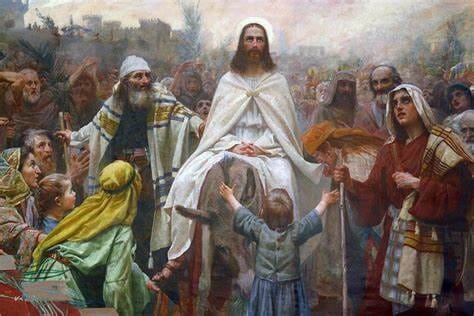
Timeline of 5 Days Leading to Last Supper Revealed
The following is a timeline from the day Jesus entered Jerusalem known as Palm Sunday, until late Thursday evening when He was arrested by the Temple guards and taken to the palace of the High Priest Caiaphas.
Because of the accuracy of modern astronomy, we can now know with certainty that Jesus was crucified on Friday, April 3rd, and arose on Sunday, April 5th, 33 A.D. If we look at the night sky over Jerusalem on April the 3rd, we see two astronomical events that serve as indisputable proof that this date is accurate. One was the occurrence of a full moon and, it was a Blood Moon. However, there is a reason that we do not commemorate this date today. Pope Gregory XIII (1502-1585) wanted a calendar that did not need constant updating. He also wanted Easter to always be celebrated on a Sunday because Jesus arose on a Sunday. So, he commissioned a new calendar to be created know as the Gregorian Calendar. Then, to get Easter to always fall on a Sunday, he went with the suggestion made by the Council of Nicaean in 325 A.D. Their solution was that the hotly debated date as to the exact date be set aside, and that Easter would always be held on the first Sunday after the first full moon of the vernal or Spring equinox. This is why we do not celebrate His resurrection on the actual day but instead on a symbolic day.
Scripture tells us that the Friday Jesus was crucified was the “preparation day” for Passover (Mark 15:42; Luke 23:54). This means that Passover would have occurred the next day or Saturday. Scripture also gives us a very important piece of information by citing that the Passover involving Jesus' crucifixion fell on a Saturday. Therefore, knowing that Jesus was about 30 years old when He started His ministry, we can deduce that He was about 33 when He was crucified (Luke 3:23). So, all we need to do is to run the astronomical clock backwards to look at the Judean sky during the first half of the first century. What we are looking for is a full moon that occurred on a Saturday in the Jewish month of Nisan {March or April}. And there it is! We clearly see a full moon on a Saturday in the month of April 33 A.D.

Now, before the advent of the modern calendar, every month consisted of thirty days and had a full moon on the 15th. Passover always took place during a full moon in the month of Nisan which, by today's calendar, is in late March or early April. Even though today we follow the modern calendar, the Jews still celebrate the Feast of Passover during a Spring full moon, regardless of the month and date it occurs according to the modern calendar. So, our astronomical software takes our modern calendar and reconciles it with the ancient moon cycle driven calendar then informs us that if we want to know the exact date Jesus was crucified almost two thousand years ago, it was April 3rd, 33A.D. even though today that date seldom falls during a full moon.
On an interesting note, there will be a full moon on April 2nd 2026 which is seven years before the 2,000 year anniversary of Jesus' death, burial and resurrection. Then there will be another full moon on April 3rd, 2034. Perhaps the 7 year tribulation period will take place during these years? Please see related: “How the Modern Calendar was Invented”

Modern astronomy shows us that, on Friday evening April 3rd 33 A.D. a full moon rose over Jerusalem appearing at 6:00 pm. It was at this time that Passover officially began starting with a traditional meal. The Feast of Passover was always eaten in the home at sunset with other religious rites and celebrations taking place in the Temple the next day. But remarkably and ominously, astronomy also shows us that the full moon that rose over Judah on the Passover of 33 A.D. was a Blood Moon. Even more astounding, the moon turned red three hours earlier before it appeared rising over Judah. This means that the moon went blood red at 3:00 pm which was the exact time that Jesus died. Please see related: “Actual Date of the Crucifixion Date of Jesus Revealed”.
We can now confidently work backwards from this established date in order to learn more accurate dates concerning the events that took place over this one week period.
We now know that Jesus must have ridden into Jerusalem on the colt of a donkey on Sunday, March 28th. According to a prophecy of Daniel, His arrival would occur in year 483 after the rebuilding of the defensive walls of Jerusalem. Daniel prophesied that the Messiah would then be “cut off” or killed. But he went on to prophesize that He would return a conqueror in year 490 (Daniel 9:24-26). Jesus was crucified in 33 A.D which was exactly 483 years after the wall of Jerusalem was rebuilt. But, because His crucifixion was brought about by the Jewish religious leaders colluding with Rome, God stopped this clock concerning His chosen people the Jews, in year 483. However, after the rapture of the Church, a 7 year Tribulation Period (focused mainly on the Jews) will began. At this time, God’s clock will once again start up and count off the remaining seven years till the return of Christ. At the end of the 7 year Tribulation Period, Jesus will appear in the skies over Israel and descend to the Mount of Olives. From there He will go into the third Temple in Jerusalem and reign over the earth for the next one thousand years (Revelation 20:6).
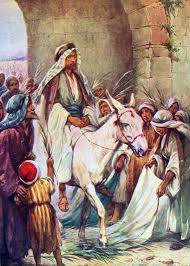
Jesus’ arrival riding a colt through the eastern or Golden gate of Jerusalem on Sunday fulfilled a prophecy by both Zechariah and Isaiah concerning the arrival of the Messiah (Zechariah 9:9; Isaiah 62:11). His arrival on a Sunday also carried meaning. The Jews considered Sunday not only to be the first day of the week, but according to the Book of Genesis, also the first day of creation. God finished giving His creation commands on Friday and rested on Saturday or Sabot. The Jews decided to make their day of formal Temple worship on Saturday since they would also rest from work on that day. But Saturday becoming their day of worship was not a command from God. So, it was on the Day of Creation that Jesus appeared in Jerusalem. Then. on following Sunday, He would arise as the "First Fruit of the Resurrection" immortal and a new creation ( I Corinthians 15:20-23). Because He arose on Sunday, His Church decided to make their day of formal worship on Sunday. Muhammad originally had the Muslim day of worship also on Saturday to coincide with the Jews. But, he later became upset with the Jewish religious leaders for not acknowledging him as a prophet of God. So, he changed the day to Friday.
Jesus got off the colt and walked into the Temple. Sunday would be the first of four days that Jesus would appear in the Temple. The reason for this four day period was because Mosaic Law required a Passover Lamb be inspected for blemishes over four days. Only then would it qualify as being a worthy sacrifice in the eyes of God. So, as the sacrificial lamb of God, Jesus would freely interact with the public and religious leaders by teaching, preaching and healing them for four days (Sunday-Wednesday) (John 1:29).
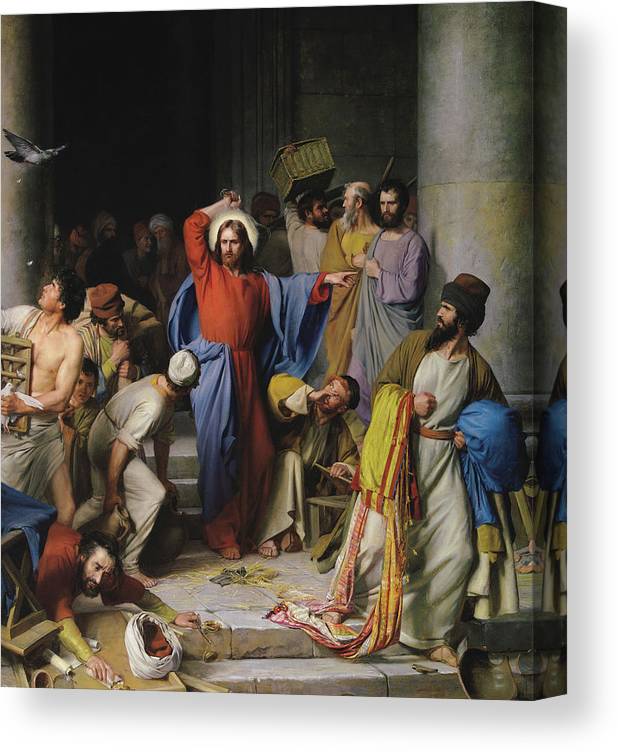
As He entered the Temple, Jesus immediately expressed His righteous anger and indignation at the merchandising taking place throughout the Temple including the Court of the Gentiles. He quickly put together some strands of rope and drove the money changers out of the courtyard (Matthew 21:12-13). This area was reserved for both Jewish and gentile pilgrims to hear and meditate on the Word of God. Scripture tells us He did not teach on this day, but He did draw the attention of the religious leaders when he overturned tables and drove out the merchants. At the same time, he also healed the blind and lame that came to Him. The Chief Priests and Scribes all saw the wonderful things that He did in both righteous anger and in loving compassion. But, they worried if He was eventually going to declare Himself the Messiah during the coming Feast of Passover. He left the Temple and spent the afternoon among His disciples and friends in the village of Bethany (Matthew 21:17). That night He had dinner at the house of Lazareth who He raised from the dead only one week earlier.
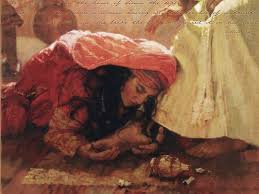
Because the Book of Genesis states that, "the evening and the morning were the first day." the Jews recognize the start of a new day after sunset. So, while it was Sunday evening that Jesus went to the house of Lazareth for dinner, after sunset Sunday, March 28th became Monday, March 29th. Now we are six days from Passover which will take place on Saturday. Scripture tells us it was at this meal that Mary, the sister of Lazareth, anointed Jesus feet with oil. We can know this date for certain because John writes that this event took place "six days before Passover" (John 12:1-3).
On Monday March 29th Jesus taught during His second day in the Temple’s plaza area. It would be during the next three days that Temple priests were sent to ask Him questions specifically designed to elicit an answer that would cause a theological or political problem for Jesus. If He answered in a way that strayed from accepted Mosaic Law, He could be libel for blasphemy. If His answer went against Roman Law, He could be accused of sedition. Either way, the punishment was death. But their continued attempts had not worked. Instead, Jesus gave answers that the public found fascinating, and consoling and were not problematic for Rome. While most of His answers were Scripturally based, some were not. Still, He proclaimed these answers with great authority, and the priests could find no theological fault in them (Matthew 7:29; Mark 1:22). He also cleared up issues that the priesthood could only continuously argue about among themselves. This had become a favorite pastime for them and still is to this day.
On Tuesday, Jesus again arrived at the Temple, taught the growing crowds and continued to answer the questions of the priests with no fault being found in His logic. It was becoming clear that these questions never troubled Jesus, and actually only served to publicly embarrass the priesthood.
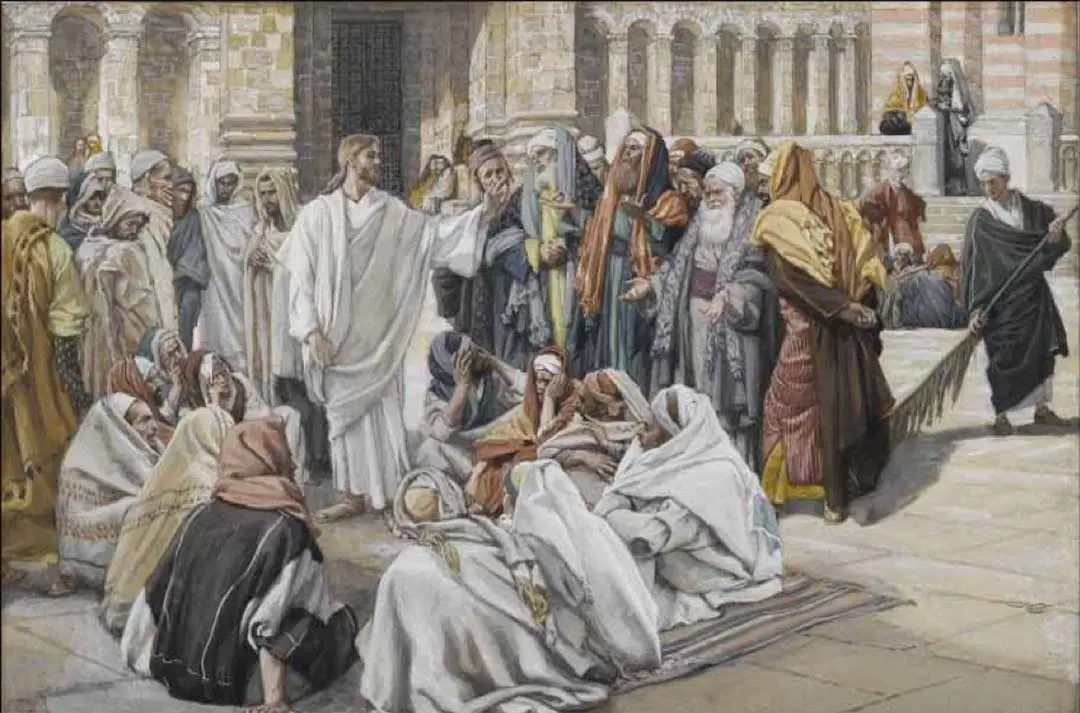
On Wednesday, Jesus visited the Temple for the fourth and final time. He taught that morning knowing that the priests would eventually arrive. After He finished preaching and healing, the priests once again requested that He answer their well-prepared questions. However, this time Jesus said that He had a question for them. And, that if they could answer it, He would then answer their question. This no doubt excited the priests because the great Jesus of Nazareth had never before turned to them for their opinion on a topic.
Jesus started out by simply asking them, "What think you of the Christ or Messiah? Whose son is he?" "They said to Him The son of David."(Matthew 22:41-46) Jesus then said to them that if their understanding was correct, then why did David in the Spirit, prophesize and say, “…THE LORD said to MY LORD, sit You at my right hand until I make Your enemies Your footstool?” (Psalm 110:1). The religious leaders knew the quote but it was simply one more verse in Scripture they could, or would not agree on as the answer would suggest that God was both singular and plural in nature all at the same time. However, it is obvious that David was relating the understanding that MY (David’s) LORD was talking to a second or THE LORD. Therefore, David was saying that THE LORD that he worshipped, communed or had a relationship with a SECOND LORD. So, with this in mind, how could it be that the coming Messiah would be both David’s human son or descendant, yet at the same time, be HIS LORD? This understanding must have been divinely revealed to David that there were in fact two separate, equal eternal Gods that worked in perfect singularity with each other. This was a mind boggling theological concept that Jewish scholars have never been able to philosophically reconcile. The Jews knew that the word Jehovah was a name that expressed God as an entity in the plural form. But, on the other hand, God was clear that He was the One and only Creator. So, how was this concept or construct of a duality in the essence of God possible?
Today we know that this is why Jesus called Himself the Son of Man as He was fully human. But under questioning by High Priest Caiaphas, He stated that He was also biologically the Son of God. Jesus was created genetically so as to be both fully human by Mary and fully divine by way of the Holy Spirit (Luke 1:35). This was a natural impossibility made a reality through the supernatural power of God. Bottom line, Jesus made it clear using David’s own words that they were looking so hard for a Messiah made in their own image and for their own self-serving reasons, that they could not see Him right before their very eyes. They were looking for a charismatic leader to arise in Judah, inspire a national fervor and lead a military force that would defeat Rome. Then, the country could once again become the powerful theocracy it once was.
But Jesus was intimating by using the very words of David, their last great leader, that the Messiah would be plural in His nature just as God is. He would be human yet divine. A son of man and a Son of God. He would die for His people but would resurrect Himself from the dead and usher in eternal life for mankind. He would be sent first to the Jews ,but because of their hard hearted spiritual shortsightedness, He would now graft the gentiles into the family of God. He would rule Judah but also the entire world in truth and righteousness.
This concept of a duel Godhead shook the priest’s theological concepts down to their very foundations. They were completely unnerved and speechless at the profound implications of this prophecy made by David, and now used by Jesus to publicly challenge them. They valiantly struggled to come up with an answer, but found themselves completely drowning in the theological ramifications of the answer to the simple question Jesus had posed. Meanwhile, the crowds waited in complete silence for their response. They communed among themselves then simply hung their heads, turned and walked away. Scripture tells us that the religious leaders did not ask another question of Jesus from this moment on. Instead, they plotted to have Him killed (Matthew 26:4). Thus, day four had ended with the Temple priests being shown up for the inept hypocrites they were, yet finding no blemish in Jesus.
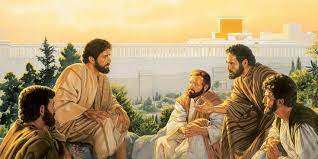
Jesus then left the Temple and led His disciples up into the Mount of Olives. As they walked a path overlooking the Temple Mount, He suddenly prophesied the coming total destruction of the vast Temple complex. He disciples were amazed to think this was even a possibility. So they asked Him when exactly would this happen, what would be the signs of His coming into His Kingdom and the end of the Age. When they arrived atop the mount with a commanding view of Jerusalem below, Jesus then privately met with Peter, James, John and Andrew. It was then that He gave them, and us, the most detailed description in all of Scripture concerning the exact timing of His Second Coming (Matthew 24:3-31). Jesus would later convey to Paul the details concerning the great rapture of the Church (I Thessalonians 4:16-17; I Corinthians 15:52). And He would give John, His last surviving disciple, a vivid detailed account of the seven year tribulation period and His Second Coming found in the Book of Revelation. Jesus never returned to the Temple which was completely destroyed in 70 A.D. exactly forty years after He began His ministry.
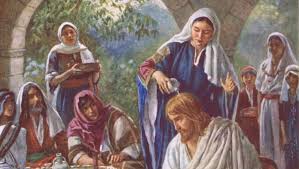
Wednesday evening, Jesus had dinner with Simon the leaper. Scholars believe that Simon may have also lived in Bethany and may have had the help of Martha, Mary and Lazareth in preparing a meal for Jesus and His twelve disciples. It was at this meal that an un named woman approached Jesus and anointed is head with a fragrant oil known as Spikenard. This time not only was Judas upset with the extravagance of her actions, but other disciples joined in. Jesus again rebuked them and said that this women would be remembered wherever the Gospel story was preached (Matthew 26:13). Jesus would carry the scent of this anointing Thursday during the Last Supper, His arrest, trials, crucifixion and burial (Matthew 26:12; Mark 14:8; John 12:7). On an interesting note, this expensive aroma would have no doubt only led to the Jewish religious leaders and Roman solders hating Him all the more.
This selfless act of devotion was seen by Judas as the final straw. He had joined the group with the hope that his time with Jesus as treasurer would lead to power and wealth. But instead, the Jesus of the Messiah movement had morphed into nothing more than a cult of personality worship. Jesus explained that His two anointing's that week were made in anticipation of his His imminent death and burial. Still, Judas apparently went out later that night or early Thursday morning and met with the Temple’s Chief Priests. He wanted to force Jesus to say out loud who He was and what was His plan of action ( Matthew 26:14-16; Mark 14:10-11; Luke 22:1-6).
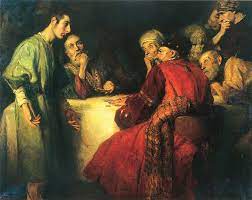
Judas explained to the chief priests that it would be a good idea for all involved if Jesus could meet with Caiaphas and the Temple priesthood. There, everyone would have the opportunity to voice their questions and concerns as to the future of the growing Jesus movement and what role it could play in the Temple’s plans concerning the Roman occupation. He went on to explain that in order to expedite this meeting, he would be willing to inform them as to a time and place where Jesus could be peacefully taken into custody. Then He could be taken to Caiaphas and there a discussion could take place and a plan developed that would be mutually beneficial to all parties involved. However, he first wanted a finder’s fee for his trouble. Scripture tells us that Judas "covenanted" or negotiated an agreement with the priests to get a higher fee than was first offered (Matthew 26:15).
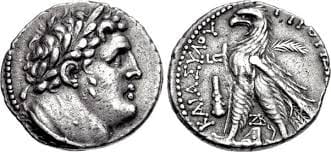
They finally settled on a price of thirty pieces of silver known as a silver Shekel. This was the price paid for a slightly imperfect slave. Judas was told he would receive the finder’s fee once Jesus was securely in the custody of the Temple guards.
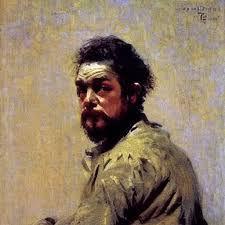
In Judas’ mind, there were three major objectives he wanted to accomplish. First, he wanted to force Jesus’ hand by having Him meet with Caiaphas so the two could discuss exactly who Jesus was and what was His plan. Was He in fact the Messiah and if so, when was He going to declare Himself as such? Judas believed that Jesus would need the backing of the Temple and Sanhedrin if He was to succeed in creating a revolt that would overthrow the Roman army stationed in Judah. Second, what would be the role of the disciples? Would they receive positions of wealth and power in this new government system run by Jesus and the Temple? And third, if no agreement could be reached and Jesus was imprisoned or exiled, then Judas would confiscate the groups treasury purse as severance pay for three wasted years of his life. He would then return to his home in Kerioth Judah, just south of Jerusalem, and use it to start up a business venture.
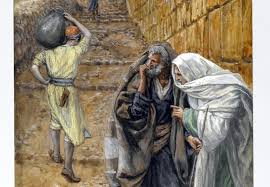
On Thursday morning, the disciples, and now especially Judas, wanted to know where Jesus wanted to eat the Passover meal that would begin the next day on Friday evening (Mark 14:12; Matthew 26:18). Jesus would meet privately with Peter and John and give them a set of detailed instructions. They were to enter Jerusalem through a certain gate where they would find a certain man who would lead them to a certain house which contained a certain room where He had chosen to eat supper later that night. They no doubt thought this house would also be the place they would celebrate the Passover Feast Friday night, but Jesus knew otherwise. Jesus told them that as they passed through the Beautiful gate, they would see a man carrying a jar of water. This would be an unusual site as it was a woman’s duty to supply a household with water. He told them to follow behind the man discretely to a house where he would lead them. When the master of the house opened the door, they were to say to him this pre-arranged code phrase, “The Master says to you, Where is the guestchamber, where I will eat the Passover with My disciples?" Then they were to follow him to the room and have it appropriately arranged to host their Thursday night meal (Matthew 26:18; Luke 22:7-13). In this way, only Jesus, Peter and John would know the exact location of the room until the disciples were led there that evening. This allowed the group to be able to escape the prying eyes and ears of the Temple’s spy network.
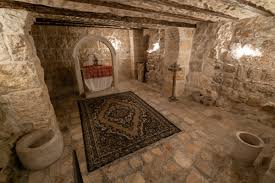
But at the same time, this would also keep Judas in the dark and create one last effort on Jesus’ part to bring him back into the fold. Jesus wanted to celebrate with all His disciples and not have this occasion literally be Judas’ last supper. Jesus hoped that the comradery of the meal might cause Judas to rethink what he thought was a foolproof plan. Jesus knew Judas' plan was tragically flawed and would ultimately lead to his eternal destruction. Judas was free to make this choice, but Jesus was hoping He might change his mind. Jesus knew He would be arrested, tried and executed. But this eventuality did not need to involve one of His own. Jesus also knew that Satan wanted Him dead, but this did not have to include the death of Judas unless Judas was determined to help play a part in Satan’s plan.
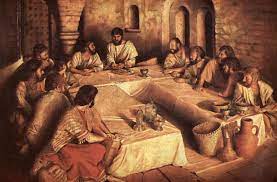
The room where the supper was to take place was in the second story of a house probably owned by the family of Mark (Mark 14:14-15). Scholars believe that Mark was also known as John Mark who was the teenage son of wealthy parents and followers of Jesus. The house today is located just inside the Jaffa Gate on Ararat Street. In the time of Jesus, the second floor room overlooked the tomb of David and had a clear view of Mount Zion. However, a new structure was later built upon the walls of the old house so that today the room is in the lower level of the church that now encapsulates the house. Thus ironically, the Upper Room is now a lower room. It is also believed that John Mark’s parents owned the Garden of Gethsemane where Jesus went to pray in private and sometimes camp with His disciples. This would help explain how young Mark was almost caught by the Temple guards as they were arresting Jesus (Mark 14:51-52). Please see related: "The Site of the Upper Room Revealed". Scholars believe that Peter was Mark's mentor. Therefore, the Gospel of Mark includes both his own remembrances of his time with Jesus plus those as told to him by Peter.
Once Peter and John had reserved the room, it was time to purchase the food and pay staff for its preparation. They would have gone to Judas to be given the money. Judas had met with the Chief priests the night before or earlier that morning. He was now focused on trying to put together a plan in which Jesus could be taken to meet with Caiaphas without the other disciples becoming involved. He also did not want his part in this plan known unless his plan succeeded in being beneficial to Jesus and the Temple. But at this time, while Judas now knew that Peter and John had rented a room, he did not know where that room was located. He gave them the money then probably dropped by the Temple to let the Chief Priests know to be ready to move later that night should the opportunity present itself.
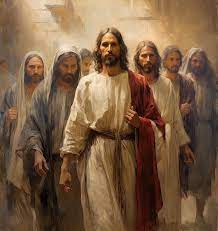
On Thursday evening just before sundown, Jesus and His disciples would have come into Jerusalem. Then, walking at a distance from each other and mixed in with the crowds, they would keep each other in sight as they moved towards the house. Once in the room, they were finally able to relax and freely talk among themselves. They were excited that Friday would be the start of the feast of Passover and the third anniversary of Jesus’ ministry. They were no doubt still contemplating the full ramifications concerning Jesus riding into Jerusalem on a colt. They knew this fulfilled ancient prophecies concerning the arrival of the Messiah. Therefore, they were very excited to think that it would finally be on this Passover that Jesus would announce that He was in fact the long awaited Messiah. What would happen beyond this announcement was up to Jesus. But, they hoped this would be the time that each of them would be appointed to rule over a tribe of Judah as Jesus had promised them (Matthew 19:28).
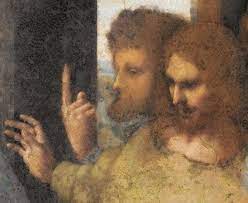
Once in the room, Jesus would have let it be known that after the meal, he was planning on taking the disciples to the Mount of Olives to pray. This was a tradition of His when in Jerusalem. Judas now knew the exact location of where they would go and possibly camp. As the meal was drawing to a close, Jesus made one last gesture of kindness towards Judas. He offered him the sop which was a small dish of concentrated basting juice. It was considered an honor for the host of a meal to offer this to an attendee. Judas accepted the honor by soaking some bread in the mixture and eating it. Then Jesus looked Judas in the eyes and said to him, “Do what you do quickly”. Now it was up to Judas to decide his fate. Scripture tell us that it was at this exact moment that Judas made up his mind to betray Jesus. And it was at this exact moment that Satan entered unto him (John 13:27).
Judas now thought that the meal was over. But in point of fact, Jesus needed Judas to leave the room so that he could conduct the first ever Communion which would be consummated through His self-sacrifice on the cross. After Judas left, Jesus now knew His arrest would take place later that evening in the Garden of Gethsemane. It was in the Garden of Eden that Adam, the first sinless man, broke His covenant with God. And it would be in a Garden that Jesus, the last sinless man, would keep His covenant with God even unto death. He also knew He would be crucified in the morning just as He had prophesied to the disciples on three different occasions. As Judas closed the door behind him, Jesus said to the group, “now is the Son of Man glorified” (John 13:31). Jesus then went on to say, “A new Commandment I give to you, that you love one another; as I have loved you …” (John 13:33-34). The disciples thought that Jesus had simply told Judas to go and pay the host in order to secure the the room for the following nights Feast of Passover (John 13:26-31).
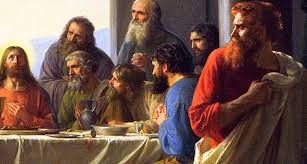
Because Jesus told Judas to go, he may have thought that Jesus had somehow learned about the planned meeting with Caiaphas and was showing He was agreeable to it. But, in any case, he left the house heading straight for the Temple. He could tell the Temple religious leaders and guards where Jesus was and that the group would soon be heading up the Mount of Olives to the Garden of Gethsemane. There, it would be isolated, dark and easy to take Jesus quickly into custody. It was also only a short walk from the garden to Caiaphas’ palace where the meeting would be held. The priests would have sent spies to watch the house and report back when the group left for the Mount of Olives.
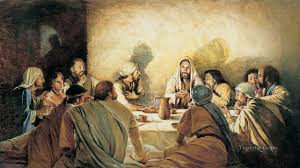
After Judas left the room taking Satan with him, Jesus was now free to reveal a new more perfect covenant of grace that would replace the temporary old covenant of law. This covenant would also replace Passover with the act of Communion (Matthew 26:26-28). The traditional Old Testament Passover meal was always just a shadow prophecy of the New Testament Communion of Christ with His followers. Jesus now spoke on many subjects. Then He drank from and passed around the first Cup of Passover wine know as the Cup of Sanctification (John 17:19; I Corinthians 6:19; Hebrews 10:10). This Cup now signified for the followers of Jesus, the profound significance of this event. He then drank and passed around a second cup known as the Cup of Deliverance (Luke 22:17; Colossians 1:13; Isaiah 53:5-10). This Cup now represented that Jesus, through His death, has delivered mankind from the penalty of sin. Just before the end of the meal He drank and passed around a third cup know as the Cup of Redemption (Luke 22:20). This Cup now represented Jesus' sacrifice of Himself in order to redeem mankind from sin in the eyes of God. Jesus did not drink the last cup known as the Cup of Praise. Instead, He said He would drink it with His followers in His Father's Kingdom (Matthew 26:29). This will likely occur during the toast at the Marriage Supper of the Lamb.
The Old Testament was the Old Mosaic Covenant based on Law that God established with His chosen people the Jewish race. The New Testament is the New improved Covenant that Jesus established between Himself and God the Father for the salvation of Mankind based on grace and mercy. This was a superior covenant as imperfect man could not keep the old perfect law perfectly. So, mankind was taken out of the New Covenant equation and replaced with the sin free man Jesus. He then voluntarily sacrificed Himself in order to consummate this universal eternal covenant. Now mankind can rest assured of eternal life through faith in Christ plus nothing else. Mankind is no longer dependent on his own ability to create works of enough worth in the eyes of God that hopefully he can earn his way into Heaven.
He then blessed His disciples, sang a final traditional Passover hymn and then led them out into the cool night air and up to the Mount of Olives. He would now prepare to meet His destiny.
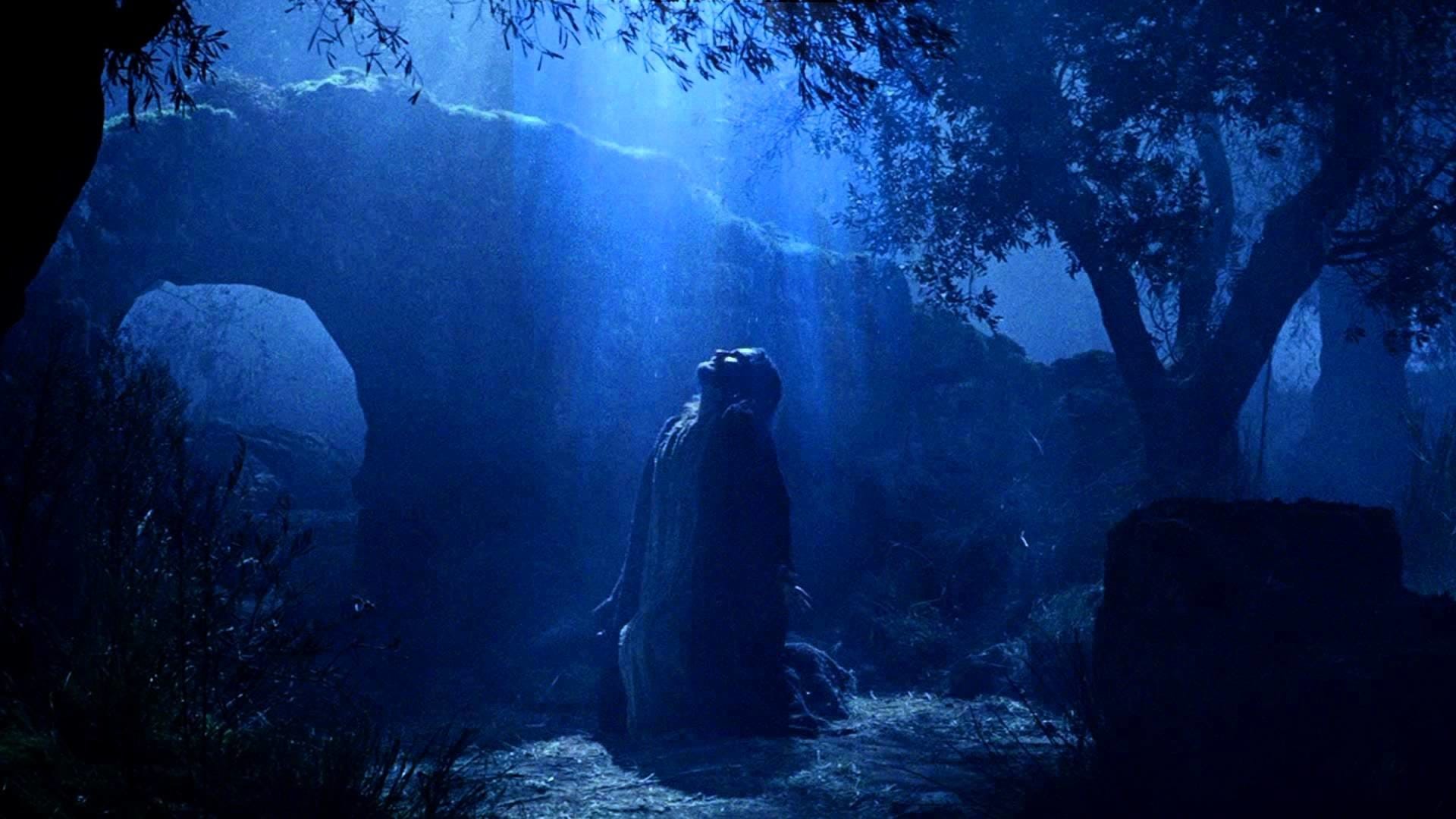
The pre Passover supper began around 6:00p.m. and traditionally lasts approximately three hours. Judas left the room, and according to the writings of John, Jesus spoke for about another hour. It was now Thursday, April 2nd around 10:00 pm. when the disciples arrived at the Garden of Gethsemane located on the Mount of Olives. Jesus usually prayed for between two and three hours late at night and again before sunrise. It was during these times of quiet solitude that Jesus could concentrate on the will of God concerning what He would accomplish during the day that lay ahead of Him. It was after these sessions that He was fully revitalized. A 24 hour day for Jesus usually consisted of 4 hours of prayer (2 hours in the morning & 2 hours in the evening), 12 hours consisting of travel, teaching His disciples, preaching to the public, hundreds of healings, dinners with disciples and followers, and of course 6 to 8 hours of sleep (John 21:25).
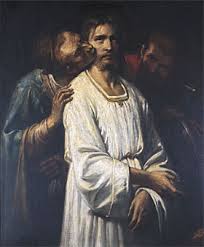
It was around midnight that Judas arrived on the Mount of Olives with the Temple Guards and religious leaders. Because it was dark, the Jewish leaders insisted that Judas identify Jesus by kissing Him on the cheek. This act became known as the Kiss of Death. They then bound and escorted Jesus to meet with Caiaphas. Judas then went back to the Temple to receive his finder's fee. Later that same morning, he returned to Caiaphas’ palace to find out how the meeting went. It was then that he learned that Jesus had been convicted of blasphemy by both the religious leaders and Judah's civil authority know as the Sanhedrin. He was told that Jesus would now be remanded to Pilate the Roman Prefect (military Governor) of Judah (26 A.D.-36 A.D.). Pilate would preside as judge over the trial of Jesus. He ultimately found Him guilty of sedition against Rome because He insisted He was a King. Pilate sentenced Him to be crucified that same morning.
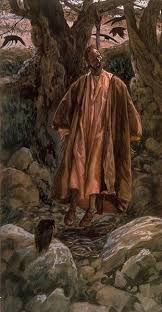
Judas began to experience a complete nervous breakdown. Nowhere in his plan did the idea of the involvement of Rome and Crucifixion come into play. He realized he had been played the fool by the Temple. He waited until He heard Pilate's verdict of crucifixion, then hung himself in a deserted field of worthless clay using the sash from his robe as a noose. And all the while Satan was laughing with delight.
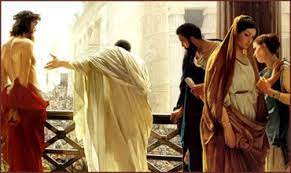
Now would begin the seven trials of Jesus and end with Him crucified Friday morning April 3rd, 33 A.D. at 9:00 a.m. He would be certified as dead by the execution squad leader around 3:00 pm and sealed in a borrowed tomb by 4 or 5:00 pm. This would be only a few hours before sundown and the official beginning of Passover. The disciples had been shaken to their very core by the rapid arrest, trial and execution of their beloved spiritual leader. Now, without Jesus and having no idea what to do, they simply hid in a room. As an ominous Blood Moon slowly rose over Judah, they huddled together and prayed that God would spare them from the same horrific fate as that of their famous Master, Jesus.
If you enjoy the information provided on this site, please consider making a donation of any amount to help continue its production. Donate Now